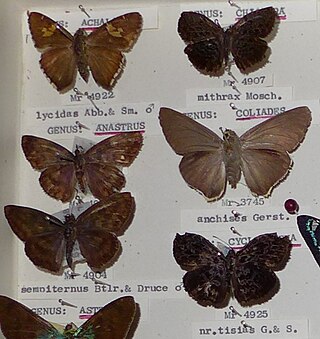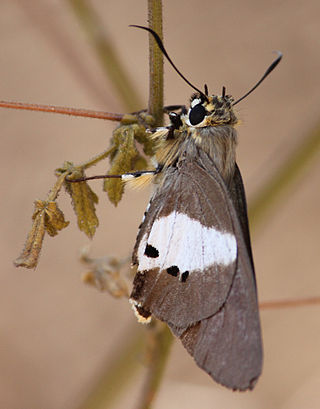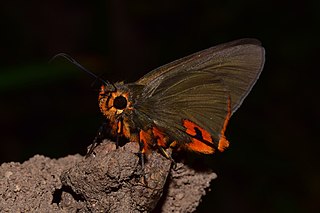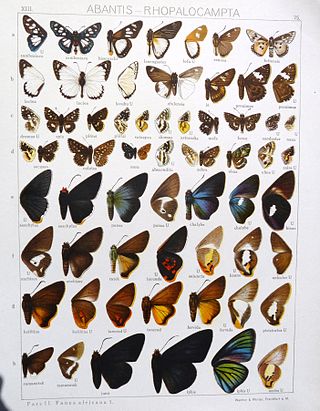
Coeliades is a genus of large skipper butterflies found in Subsaharan Africa. They are commonly known as policemen.

Coeliades anchises, the one-pip policeman, is a butterfly of the family Hesperiidae. It is found in eastern KwaZulu-Natal, Zimbabwe, Tanzania, from Mozambique to Somalia, and in Ethiopia.

Coeliades forestan, the striped policeman, is a butterfly of the family Hesperiidae. It is found from Transkei to Zimbabwe and to Botswana. It is also present on Madagascar and Mauritius.

Coeliades pisistratus, the two-pip policeman, is a butterfly of the family Hesperiidae that occurs commonly in much of sub-Saharan Africa.

Coeliades keithloa, the red-tab policeman, is a butterfly of the family Hesperiidae. It is found from Ethiopia south to South Africa.
Coeliades lorenzo, the Lorenzo red-tab policeman, is a butterfly of the family Hesperiidae. It is found in South Africa in the Maputaland forests of northern KwaZulu-Natal, and northwards into Mozambique.

Spialia colotes, the Bushveld sandman, is a butterfly of the family Hesperiidae. The species was first described by Herbert Druce in 1875. It is found in Angola, Botswana and from South Africa to Ethiopia and south-western Arabia.

Acraea lygus, the lygus acraea, is a butterfly of the family Nymphalidae. The species was first described by Herbert Druce in 1875 from specimens collected by Joachim John Monteiro. It is found in south-west Africa, Botswana, Kenya, Zambia. In South Africa it is found from the savannah in Northern Cape to the Limpopo Province and the north-west provinces. It is an occasional migrant to Mpumalanga.

Iolaus silarus, the straight-line sapphire, is a butterfly of the family Lycaenidae. The species was first described by Hamilton Herbert Druce in 1885. It is found in Mozambique, Zimbabwe, Botswana, Namibia, Malawi, Zambia, southern Zaire, Tanzania, south-western Kenya and South Africa. In South Africa it is found in wooded savannah in northern KwaZulu-Natal and in savannah from Eswatini to Mpumalanga, Limpopo and North West. It is also present in Afromontane forest on the Wolkberg and the northern Drakensberg.

Appias sabina, the Sabine albatross or albatross white, is a butterfly of the family Pieridae. It is found in Africa. The habitat consists of forests.

Appias sylvia, the woodland albatross white or common albatross, is a butterfly in the family Pieridae. It is found in Senegal, Gambia, Guinea, Sierra Leone, Liberia, Ivory Coast, Ghana, Togo, Benin, Nigeria, Equatorial Guinea (Bioko), Cameroon, the Republic of the Congo, the Central African Republic, the Democratic Republic of the Congo, Sudan, Ethiopia, Angola, Namibia, Zambia, Kenya, Uganda, Tanzania and Malawi. The habitat consists of forests.

Coeliades hanno, the three pip policeman or western policeman, is a butterfly in the family Hesperiidae. It is found in Senegal, Guinea, Sierra Leone, Liberia, Ivory Coast, Ghana, Togo, Nigeria, Cameroon, Equatorial Guinea (Bioko), São Tomé, Gabon, the Republic of the Congo, the Central African Republic, Angola, the Democratic Republic of the Congo, Uganda, western Kenya, western Tanzania and Zambia. The habitat consists of forests and dense savanna.










